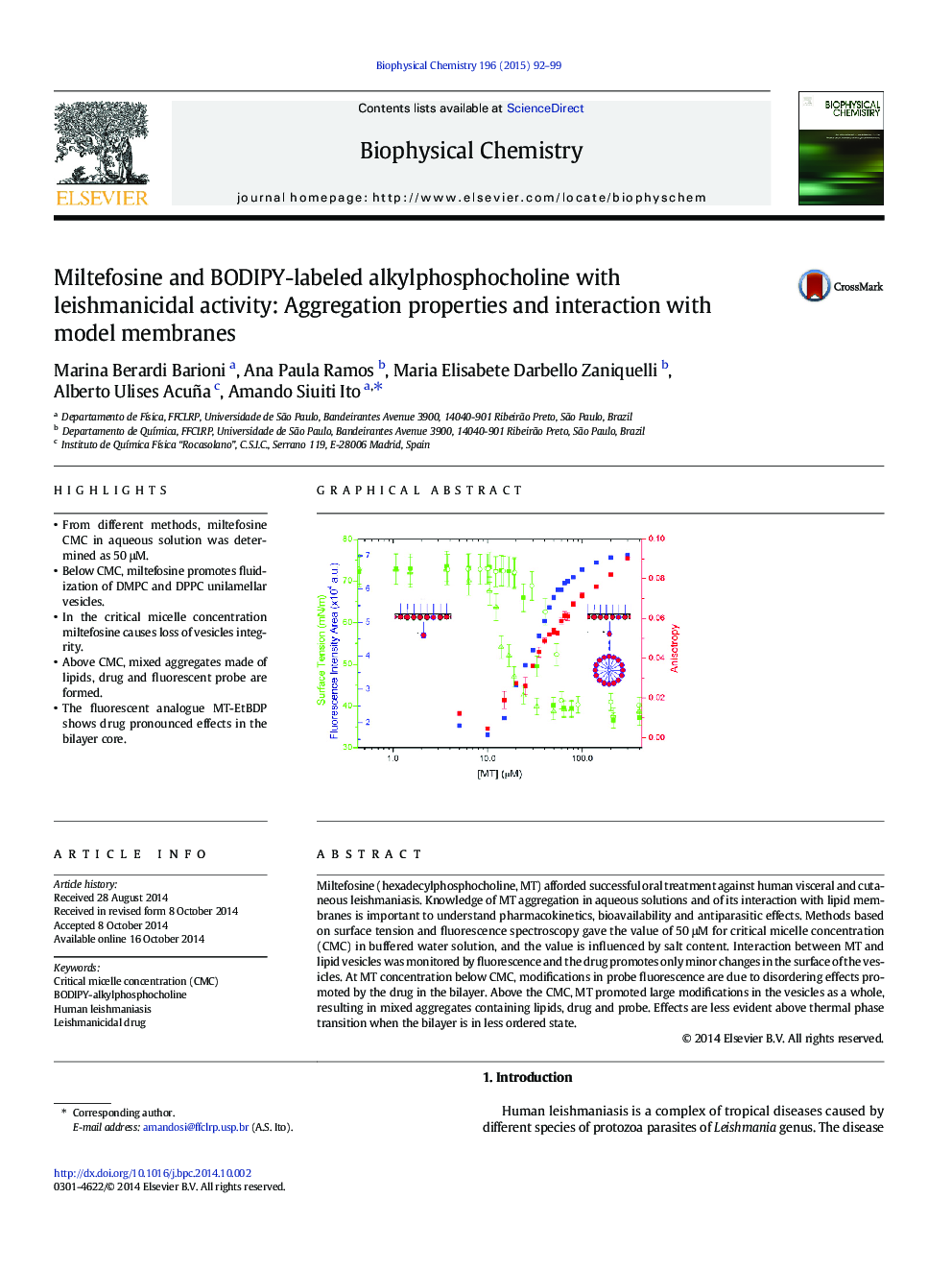| Article ID | Journal | Published Year | Pages | File Type |
|---|---|---|---|---|
| 5370899 | Biophysical Chemistry | 2015 | 8 Pages |
â¢From different methods, miltefosine CMC in aqueous solution was determined as 50 μM.â¢Below CMC, miltefosine promotes fluidization of DMPC and DPPC unilamellar vesicles.â¢In the critical micelle concentration miltefosine causes loss of vesicles integrity.â¢Above CMC, mixed aggregates made of lipids, drug and fluorescent probe are formed.â¢The fluorescent analogue MT-EtBDP shows drug pronounced effects in the bilayer core.
Miltefosine (hexadecylphosphocholine, MT) afforded successful oral treatment against human visceral and cutaneous leishmaniasis. Knowledge of MT aggregation in aqueous solutions and of its interaction with lipid membranes is important to understand pharmacokinetics, bioavailability and antiparasitic effects. Methods based on surface tension and fluorescence spectroscopy gave the value of 50 μM for critical micelle concentration (CMC) in buffered water solution, and the value is influenced by salt content. Interaction between MT and lipid vesicles was monitored by fluorescence and the drug promotes only minor changes in the surface of the vesicles. At MT concentration below CMC, modifications in probe fluorescence are due to disordering effects promoted by the drug in the bilayer. Above the CMC, MT promoted large modifications in the vesicles as a whole, resulting in mixed aggregates containing lipids, drug and probe. Effects are less evident above thermal phase transition when the bilayer is in less ordered state.
Graphical abstractDownload full-size image
